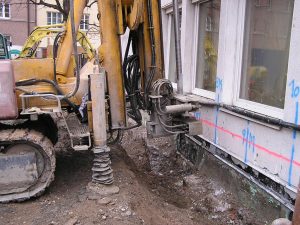Every great building project begins with a solid foundation, and underpinning is the cornerstone of assuring structural stability and durability. From iconic buildings to complex bridges, underpinning is critical in sustaining ambitious architectural initiatives and pushing the limits of what is feasible in contemporary construction. More about the author?

One of the most important contributions of underpinning to successful building projects is its capacity to reduce the risks and obstacles connected with unstable soils and environmental conditions. Underpinning offers the essential strength to resist seismic activity, expanding clay soils, and high groundwater levels. This proactive strategy improves safety while also reducing possible building delays and cost overruns.
Furthermore, underpinning permits the implementation of creative and ambitious architectural concepts that need sophisticated structural solutions. Skyscrapers with deep foundations, subterranean constructions like tunnels and basements, and buildings on sloping terrain all depend on underpinning to maintain structural integrity and operation. The accuracy and knowledge necessary for underpinning contribute to the success of these large-scale building projects, enabling architects and engineers to push the boundaries of design and technical excellence.
Furthermore, underpinning promotes sustainable building techniques by maximizing the use of existing structures and infrastructure. Instead of destroying and rebuilding owing to foundation problems, underpinning allows for targeted strengthening, keeping precious resources and reducing waste. This sustainable strategy coincides with worldwide initiatives to promote eco-friendly building and responsible material usage, resulting in a greener and more efficient built environment.
Furthermore, underpinning is important in historical preservation because it allows heritage buildings and sites to get critical structural renovations while keeping their historical character and relevance. Many famous buildings across the globe, from ancient monuments to contemporary icons, have benefitted from underpinning to preserve their long-term relevance and enjoyment by future generations.
To summarize, underpinning is an essential component in completing major building projects that define skylines, improve infrastructure, and protect architectural history. Its role in risk mitigation, allowing innovation, promoting sustainability, and permitting historical preservation highlights its significance in the building sector. Accepting the powers of underlying is critical for building long-lasting and significant buildings that serve as testaments to human creativity and ambition in construction.